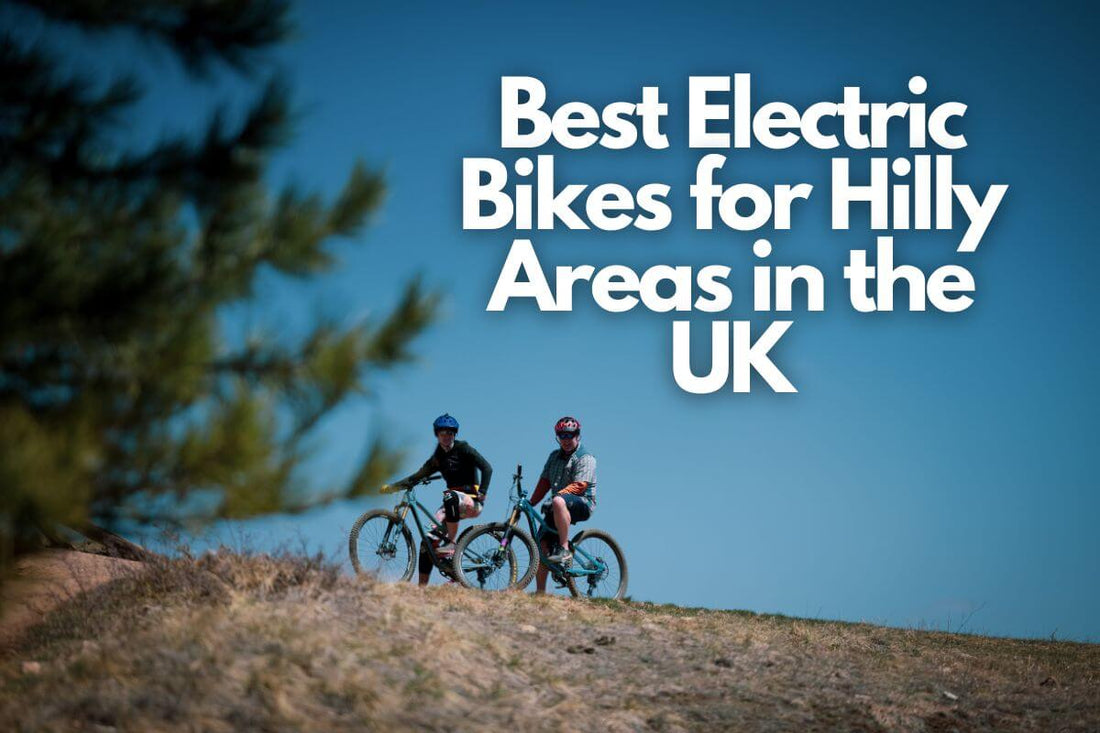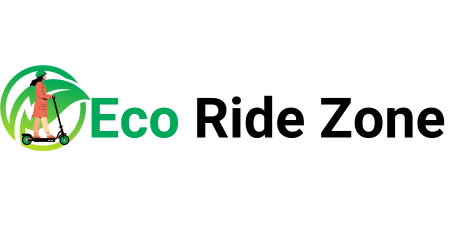
Best Electric Bikes for Hilly Areas in the UK: Climb Steep Roads with Ease
Share
If you live in a hilly part of the UK, you know how hard it can be to cycle uphill.
The best electric bikes for hilly areas have strong motors and good battery life, so you can climb steep roads with less effort.
Choosing the right bike helps you enjoy your rides without getting exhausted.
These bikes are designed to give extra power when you need it most.
Whether you’re commuting or exploring, a good electric bike will make hills easier to manage and improve your overall riding experience.
You don’t have to struggle on every slope. With the right electric bike, you can keep going further and enjoy the scenery without worrying about steep climbs slowing you down.
Top Electric Bikes for Steep Hills in the UK
You want an electric bike that helps you climb steep hills without hurting your legs.
Look for a strong motor, good battery life, and reliable brakes. Comfort and durable tires also matter for hilly routes.
Best Overall Electric Bike for Hilly Terrain (ENGWE ENGINE PRO 2.0 Electric Bike)
The ENGWE ENGINE PRO 2.0 has a powerful 750W motor. This motor gives you strong support on steep roads.
It reaches speeds up to 28 mph, making uphill rides quicker.
Its 48V 15Ah battery offers a range of 50 miles, enough for long rides without worrying about charging often.
The bike has a sturdy aluminum frame and front suspension, giving you a smooth ride on rough hills.
You’ll appreciate the hydraulic disc brakes for reliable control when going downhill.
The wide tires enhance grip on wet or loose surfaces, important for UK roads.
Best Value for Money e-Bikes for Steep Roads (Hygge Vester Electric Bike)
The Hygge Vester is great if you want solid features without a high price. Its 750W motor delivers enough power to climb most hills comfortably.
You can ride up to 45 miles on a single charge from its 48V 12Ah battery. It weighs less than many other e-bikes, so it’s easier to handle on narrow or steep paths.
The bike includes mechanical disc brakes for safe stopping and a comfortable saddle for longer rides.
It is ideal if you want good hill-climbing power but don’t need extras like full suspension.
Best Electric Mountain Bike for Challenging Climbs (ENGWE M20 Electric Bike)
The ENGWE M20 is designed for tougher off-road climbs. It has a 750W motor and a 48V 17.5Ah battery, giving you power and endurance on steep or rough trails.
Its full suspension system absorbs bumps well, so your rides stay smooth even on rocky surfaces. This e-bike uses hydraulic brakes for strong stopping power in all weather.
Wide 20-inch tires improve traction and stability on uneven terrain. If your hills include dirt paths or mixed surfaces, this bike offers the strength and control you need.
Key Features to Consider When Choosing an Electric Bike for Hills
When picking an electric bike for steep roads, you need to focus on how strong the motor is, how long the battery lasts, the bike’s frame quality, and how the gears support climbing.
Each of these factors affects how easily and safely you can ride uphill.
Motor Power and Torque for Climbing
Your electric bike’s motor should have enough power and torque to handle steep slopes.
Look for motors with at least 250 watts of power. Torque measures twisting force, and for hills, a torque of 50 Nm or more is better.
Higher torque helps the bike move smoothly when climbing. Mid-drive motors are often best because they deliver power directly to the pedals, which improves hill climbing.
Hub motors can work too, but they may struggle on very steep roads.
Choose a motor that matches the steepness of the hills where you ride most often.
Battery Range and Capacity
Battery size impacts how far you can go before recharging, especially when climbing drains more power.
A larger battery capacity means a longer ride. For hilly areas, a battery of at least 400Wh is a good starting point.
Keep in mind that steep climbs use more energy, so expect the real range to be less than flat rides.
Some batteries allow fast charging, so you can get back on the road quicker.
If you plan long rides in hilly places, consider a bike with an easily removable battery for charging convenience.
Frame Design and Build Quality
You want a bike frame that is strong but not too heavy. Aluminum frames are common because they are light and sturdy.
Steel frames are heavier but offer good durability and a smooth ride.
Look for frames with reinforced joints and good welds to handle the extra stress from climbing.
A sloping top tube design helps with balance and control on uneven terrain.
Good build quality means the bike will last longer and feel more stable when you pedal uphill or handle rough roads.
Gearing and Assistance Modes for Inclines
Gearing plays a big role in how well you climb hills. Bikes with multiple gears allow you to choose a lower gear, which makes pedaling easier on steep slopes.
Look for bikes with at least 7-9 speeds. More gears give you better control over your effort.
Electric bikes also have assistance modes that add power based on your pedaling. Modes should range from low to high support.
High assistance modes give stronger help on inclines but use more battery.
You want a system that smoothly changes power levels so you can adjust your effort while climbing without sudden jumps in speed or resistance.
Which ebike motor is best for hills?
When riding in hilly areas, the motor plays a big role in how easily you can climb steep roads.
You want a motor that offers plenty of power and good torque to help push you uphill.
Mid-drive motors are often the best choice for hills. They sit near the bike's pedals and can use the bike’s gears, which means they work well on steep slopes and rough terrain.
You get better balance and efficiency with mid-drive motors compared to others.
Hub motors are located in the wheel hubs. They can be powerful but may struggle on very steep hills because they don’t use the bike’s gears.
Rear hub motors generally provide better hill climbing power than front ones.
| Motor Type | Hill Climbing Power | Gear Use | Balance & Handling |
|---|---|---|---|
| Mid-drive | High | Uses gears | Better balance |
| Rear hub | Medium | No gears | Slightly heavier rear |
| Front hub | Low to Medium | No gears | May affect steering |
You should also look at the motor’s wattage and torque. Higher wattage (usually 500W or more) gives stronger output.
Torque (measured in Nm) shows how forceful the motor can pull. For hills, aim for 60 Nm or above.
In short, your best bet for riding hilly areas is a mid-drive motor with high torque. This setup helps you climb steep roads with less effort and better control.
Do electric bikes work on steep hills?
Yes, electric bikes can help you ride up steep hills. They use a motor to give you extra power when you pedal. This makes climbing less tiring.
The motor’s strength, called the motor wattage, matters a lot. Higher wattage means more help on steep slopes.
Most electric bikes have motors between 250W and 750W.
Your bike’s battery is also important. A strong battery lasts longer and keeps the motor running even on long climbs.
Look for batteries with higher voltage and capacity (measured in Wh).
Here is a simple table to understand key features for hill climbing:
| Feature | Why it Matters for Hills |
|---|---|
| Motor Power (W) | More power helps on steep inclines |
| Battery Capacity | Longer rides without losing power |
| Torque Sensor | Adjusts motor output based on effort you put in |
Some e-bikes also have a torque sensor. This senses how hard you pedal and adjusts the motor power. This makes riding feel smoother and easier on hills.
If your bike is light and has a strong motor, you can climb very steep hills with less effort. Harder hills will still need some pedaling from you.
Electric bikes do not remove all effort, but they make steep hills much more manageable.
Performance Tips for Riding Electric Bikes on Steep Roads
To ride well on steep roads, you need to manage your battery carefully, use the right riding techniques, and keep your e-bike in good condition.
These steps help you climb hills smoothly and avoid issues.
Optimizing Battery Usage on Hilly Routes
Steep hills use more battery power than flat terrain. To save energy, use a lower level of pedal assist when possible.
You can switch to higher assist levels only when the hill gets very steep.
Keep your battery charged between 20% and 80%. Avoid running it down completely because that reduces battery life.
Plan your route to include places where you can recharge if needed.
Turn off extra electrical devices on your bike, like lights or displays, when you don’t need them. This saves battery power during long climbs.
Adjusting Riding Techniques for Steep Climbs
Shift your gears early before the hill gets steep. This helps you maintain a steady, easier pedaling speed. Don’t wait until you are already struggling.
Use your body weight to help. Lean forward slightly to keep the front wheel down and maintain balance. Keep your pedals turning smoothly without sudden jerks.
Take short breaks if you feel tired, but keep the motor running. It’s better to rest while the assist does some work than to stop completely and lose momentum.
E-Bike Maintenance for Consistent Performance
Check your tire pressure regularly. Soft tires make hills harder to ride and use more battery power. Inflate your tires to the recommended pressure listed on the side.
Keep your chain and gears clean and lubricated. Dirt and grime can make pedaling harder, especially on hills, and can wear out parts faster.
Regularly inspect your brakes. Good brakes help you control your speed safely when going downhill after steep climbs. Replace worn brake pads quickly.
Conclusion:
When choosing an electric bike for hilly areas in the UK, focus on power, battery life, and weight.
You want a bike that can handle steep roads without draining the battery too quickly.
Look for features like strong motors (at least 500W) and long-lasting batteries (400Wh or more). These help you climb hills with less effort.
Consider the bike’s weight. Lighter bikes are easier to carry if needed and can improve handling on tricky slopes.
Think about your budget and ride style. Some bikes offer better suspension or wider tires for rough paths, while others focus on speed and efficiency.



